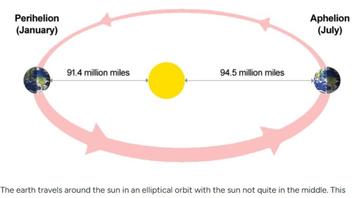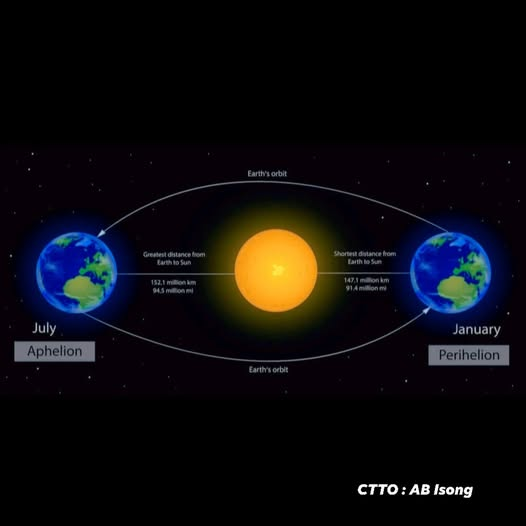
Will the earth experience "colder weather than ever before" during the "aphelion phenomenon" in August, 2025, as its elliptical orbit takes it to its most distant-from-the-Sun position of the year, as multiple social media posts claim? No, that's not true: Earth's distance from the Sun changes daily and at aphelion, the Earth's distance from the Sun is only about 3% more than the average distance. Other factors have a greater impact on temperature, including the atmosphere's ability to slow fluctuations in heat and the 24-degree tilt in Earth's axis, which determines the duration and intensity of sunlight striking the planet.
The claim was made in multiple identical posts, (here, here, here, for example), all with the same claim made in an August 18, 2025 Facebook post (archived here) that open: "COLD UNTIL AUGUST - TAKE NOTE:" and continue with claims such as:
COLD UNTIL AUGUST - TAKE NOTE:
Starting tomorrow at 5:00 AM: for 27 hours we will experience the APHELION PHENOMENON.
The Earth will be very far from the Sun ☀️.
We cannot see the phenomenon, but we CAN feel its impact. It will last until the month of August.
We will have colder weather than ever before, which can lead to flu, coughing, difficulty breathing, etc.
We must boost our immunity by using plenty of vitamins and supplements to strengthen our health.
The distance from the Earth to the Sun is normally 5 light-minutes or 90 million km.
During the Aphelion phenomenon, we are 152 million km away from the Sun -- that's 66% further.
The air will become colder, and our bodies are not used to this temperature -- it is a significant difference.
We must maintain our health as best we can. Whether it is cloudy or sunny, the cold will increase just the same!!!
Please share this information with all your family and friends, as many people as possible, so they too can take precautions.
The posts include a variety of graphics showing the elliptical orbit of the Earth around the Sun, like this one:

(Image source: Screenshot by Lead Stories of image on facebook.com/ginalyn.aguillon.1)
This fact check addresses only the astrophysics falsehoods, not the various health claims also made, which rest on the underlying misstatement of the effects of Earth's elliptical orbit.
1. Aphelion happens every year
This year won't see a greater-than-ever impact of aphelion on humans on Earth. As German astronomer Johannes Kepler observed in the 17th century, Earth's annual orbit around the Sun is predictable and not a perfect circle. Earth's distance to the Sun changes slightly every day as it orbits, but effects of gravity and momentum are constants that make the elliptical orbit predictable. That orbit has a nearest point, perihelion, and a most distant point: aphelion. At aphelion, the distance is about 3% farther than the average. But other factors have a bigger influence on solar radiation.
2. Axis tilt affects duration and intensity of sunlight
Both the Northern and Southern Hemispheres see big shifts in seasonal temperature averages because Earth is tilted 23.5 degrees in the plane of its orbit. This means solar radiation strikes more directly and for longer days in the summer in the Northern Hemisphere. In winter, Earth's orbit carries the southern hemisphere into position for more direct solar radiation and longer days. Aphelion is not a factor in seasonal temperature change, as astronomy columnist Phil Plait (a Ph.D. astronomer) spelled out in a Scientific American article about the question.
3. Atmosphere regulates temperature
As the National Oceanic and Atmospheric Administration's scientists have explained, winds and ocean currents redistribute Earth's heat, (archived here) as Earth's rotation, plus unequal heating of the surface (due to the Earth's tilted axis), move weather across the planet's surface.
In addition, CO2, methane gas and water vapor (clouds) trap heat in Earth's atmosphere, The National Aeronautics and Space Administration has documented, (archived here). This buffers Earth from the small changes in solar radiation amounts that are caused by the distance to the Sun.















